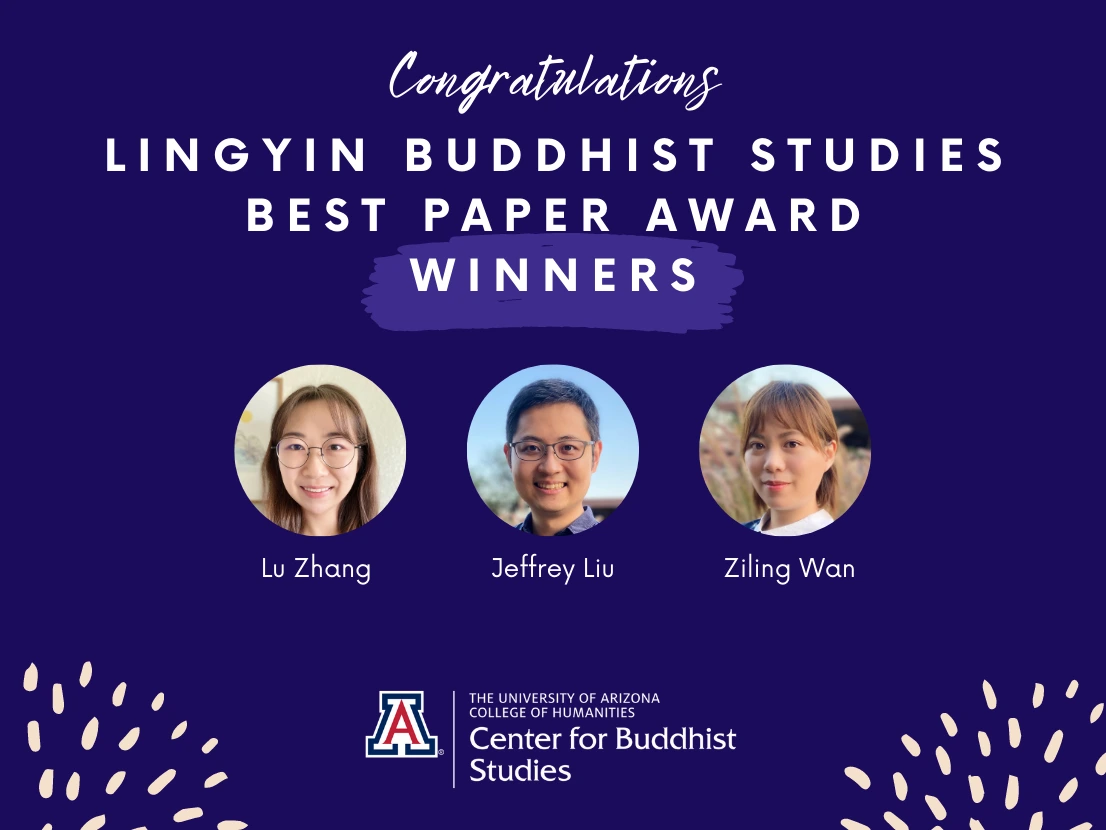
The Center for Buddhist Studies and the Department of East Asian Studies are pleased to announce the recipients of the 2022-2023 Lingyin Buddhist Studies Best Paper Award. Congratulations to Lu Zhang, Jeffrey Liu and Ziling Wan, three doctoral students who shared the award. An award ceremony will take place in conjunction with the East Asian Studies ceremony on Friday, May 6, 2022.
Lu Zhang’s paper “Interpretation and Misinterpretation: Converting Taoist Patriarch in the Chan Historiography” presents how Zhang Boduan, the founding theorist of Internal Alchemy Taoism, was portrayed to be a Buddhist convert in the Jiatai pu denglu, and how the compiler’s intentional misinterpretation of Zhang’s appreciation for Buddhism intensified the Buddho-Taoist conflict during the late Song and Yuan periods. As a case study for her dissertation project, this paper also introduces a special section titled “Sages and Worthies as Buddhist Incarnations (yinghua shengxian 應化聖賢)” in the Song denglu works and the significance of compiling this section to the Chan school.
Jeffrey Liu and Ziling Wan wrote a joint paper titled "The Making of a Sacred Landscape: Visualizing Hangzhou Buddhist Culture via Geoparsing a Local Gazetteer the Xianchun Lin’an zhi 咸淳臨安志." This paper has been published in the peer-reviewed journal Religions (Religions 13, no. 8: 711. https://doi.org/10.3390/rel13080711).
This project uses local sources to visualize and analyze the spatial distribution of Buddhist sites in the locality of Hangzhou 杭州, China during the Southern Song dynasty (1127-1279). It aims to highlight regional religious features in Hangzhou as a locality—the interactions between Buddhism and socio-cultural factors—from the visualization and analyses. Starting as a project led by Jiang Wu in 2020, the team converted all Buddhist temple locations recorded in a local Hangzhou gazetteer—Xianchun Lin’an zhi 咸淳臨安志 (Records about Lin’an from the Xianchun Reign (1265-1274), a 100-fascicle local chronicle that depicted the Lin’an Prefecture in the Southern Song dynasty)—into geographical coordinates that may serve as a foundational dataset for the spatial-temporal study of Chinese religion in the future. Based on the dataset from the team, Liu and Wan analyze the distribution of Buddhist temples via three methods: average nearest neighbor, quadruple analysis, and kernel density to highlight localism and regionalism in Chinese religious studies. This study first points out that most large-scaled Chinese religion databases cannot fit the micro-scale of regional studies and the study shows that the genre of local gazetteers is best in examining religion within a locality. Liu and Wan use the Xianchun Lin’an zhi as an example to observe the sophisticated integration of socio-cultural factors with Chinese religion as a structural formation. The highly clustered congregation of Buddhist temples that is observed from performing quantitative analyses can better depict this phenomenon from a regional perspective. This study has the potential to build needed momentum to enhance our current understanding of Buddhism on the micro-levels. It is a stepping stone for future research on religion with a focus on regionality.
Thanks to the generous support of Lingyin Temple in Hangzhou, China, the Center for Buddhist Studies at the University of Arizona established the Lingyin Buddhist Studies Best Graduate Research Paper Award of $5,000 awarded to one or more graduate students. For more information: Student Awards | Center for Buddhist Studies | University of Arizona.

